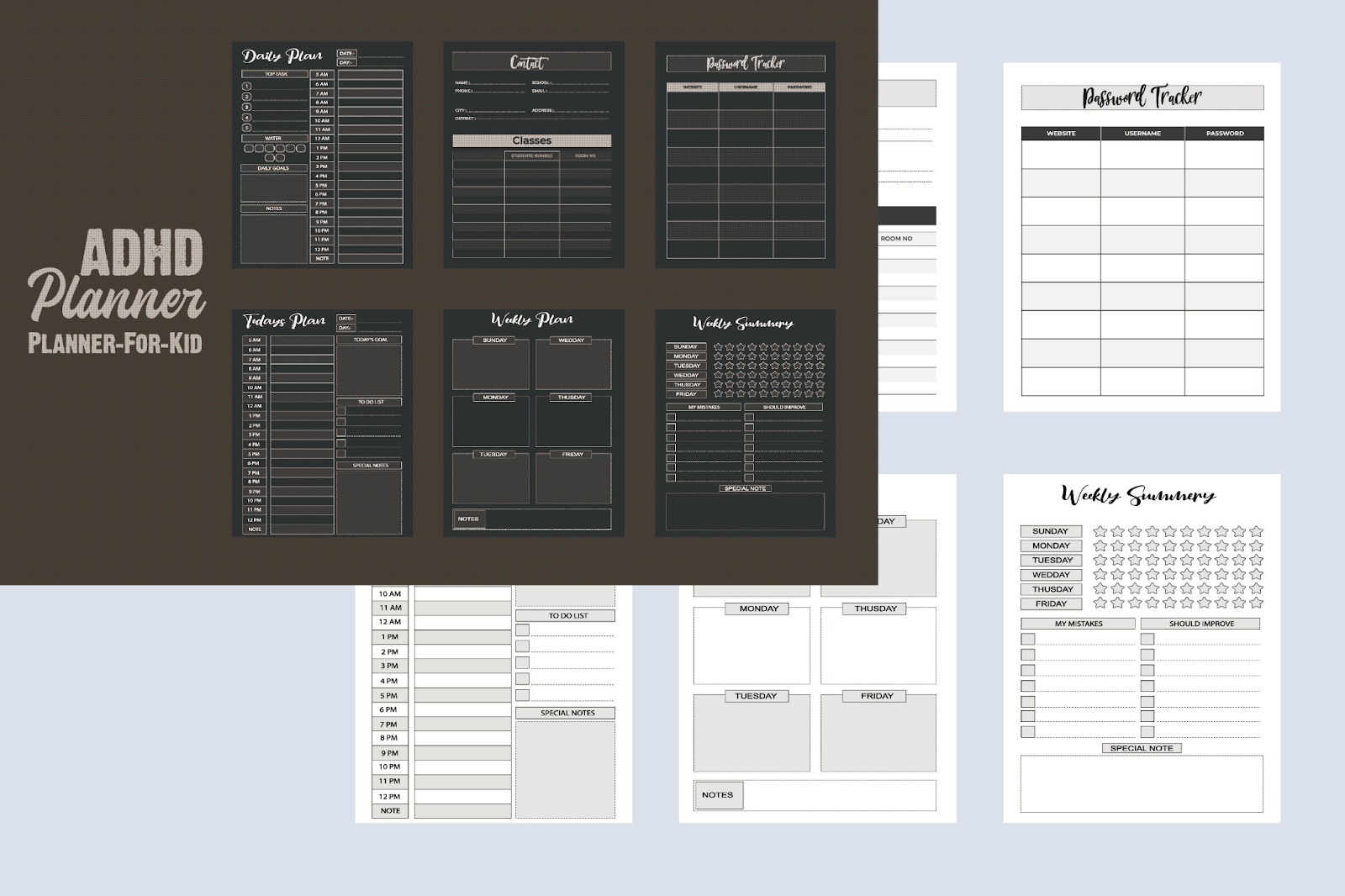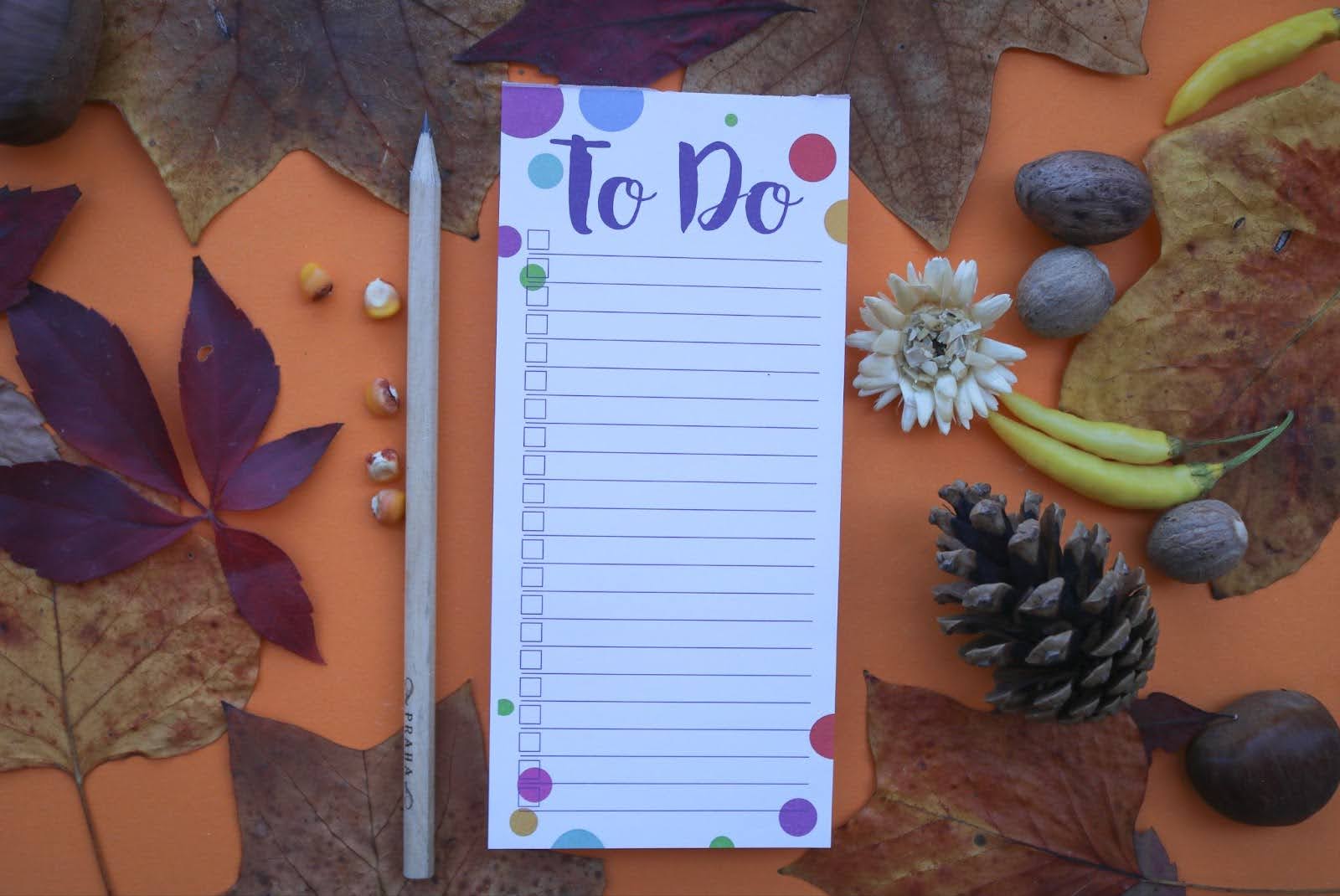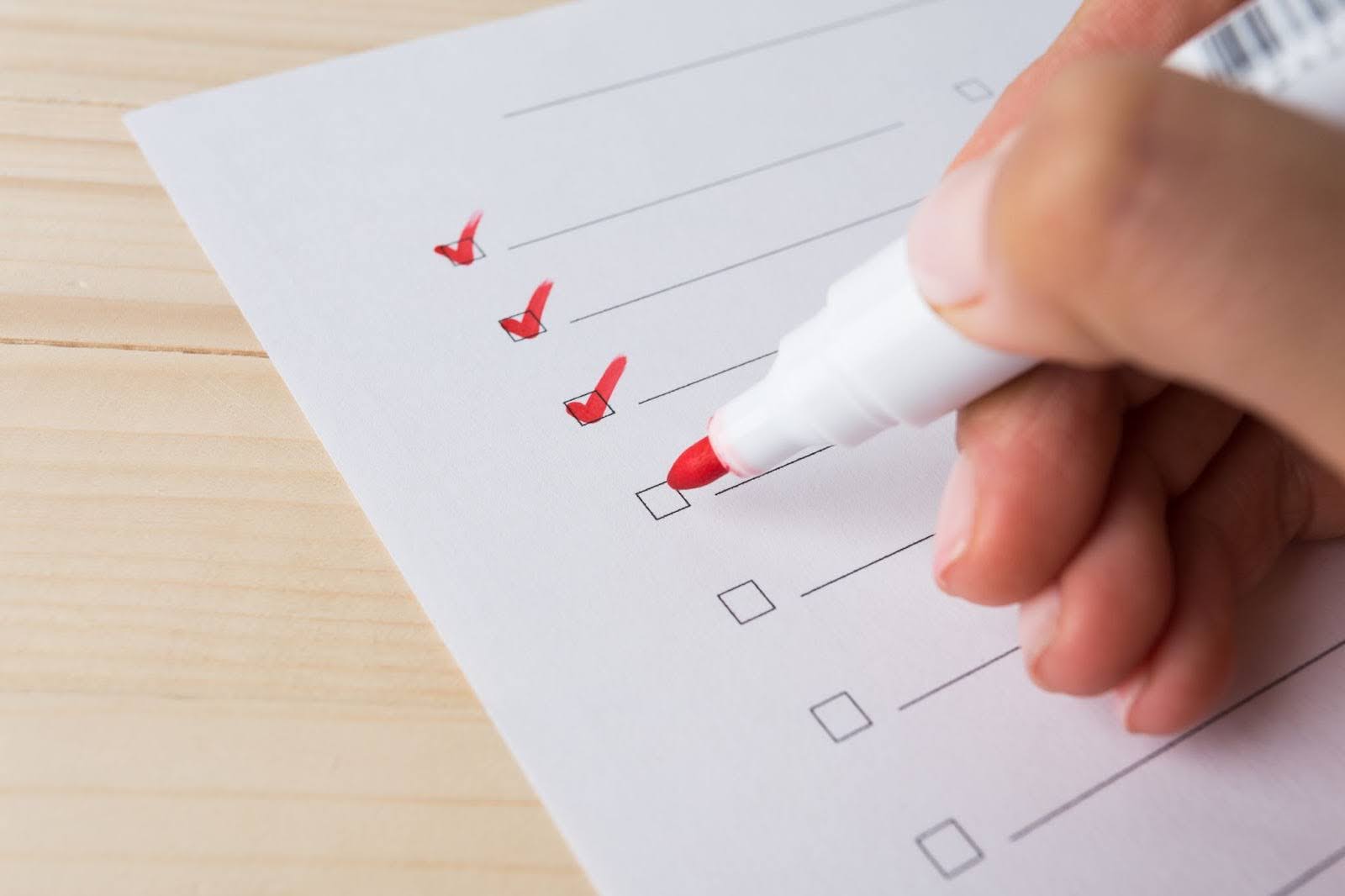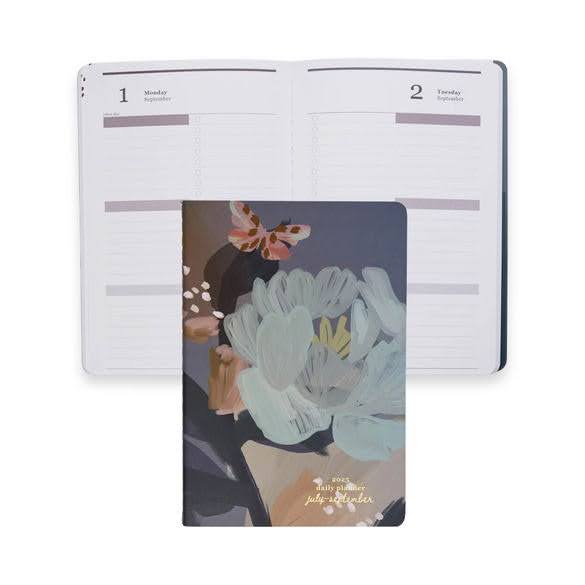
Managing time efficiently, completing various tasks, or handling complex long-term projects can be overwhelming for individuals with ADHD. Often ill-suited to their cognitive functioning, traditional organizational tools may lead to frustration. Using planners designed explicitly for ADHD brains—customizable and visually oriented—is a practical solution. These tools help maintain motivation and improve organization. Discover everything you need to know about ADHD planners.
ADHD Planners: Various Options for People with ADHD
Planners serve as essential memory aids, helping users better organize their lives by marking important information for planning purposes. ADHD planners share the same purpose as traditional planners but feature characteristics specifically adapted to their users’ needs.
-
Paper Planners
Several paper planner models are available on the market for individuals with ADHD, including:
-
-
TDAHeros
-
This planner is specifically designed to meet the needs of people with ADHD. Created by someone with firsthand experience of the condition, this solution is also based on scientific research. This printable planner stands out for its focus on flexibility and adaptability—two crucial aspects for an ADHD brain. It includes over 170 pages of practical tools, such as dated and undated calendars, daily, weekly, and monthly trackers, and sections for financial management, habit tracking, and task organization. This ADHD planner can be printed and customized according to individual preferences—bound as a notebook, inserted into a binder, or placed on a clipboard.
Website: https://tdaheros.com
-
-
PetitePlanner Folio
-
Both innovative and modular, this planner allows users to create a fully personalized agenda, making it ideal for addressing the specific needs of individuals with ADHD. The PetitePlanner Folio relies on the use of various interchangeable inserts. This system enables users to incorporate different elements into their planner, such as daily tasks, meal planners, or habit trackers to monitor long-term progress. This planner offers excellent flexibility, allowing users to reorganize, add, or remove sections as routines, priorities, or goals evolve.
Website: https://www.erincondren.com
-
-
Bullet Journal or Custom Notebook
-
Keeping a bullet journal or a personalized notebook is also an excellent option for individuals with ADHD. This method creates a visual and customized organizational system that facilitates task management, improves focus, and reduces stress. With features such as to-do lists, habit trackers, and themed collections, a bullet journal helps structure thoughts, visualize progress, and boost motivation.
-
Digital Planners or Agendas
With the rise of digital tools, various solutions are now available on smartphones, tablets, and computers to help individuals with ADHD manage their daily lives more effectively. One example is the Coach Digital Mini ADHD Planner. This digital planning tool stands out for its flexibility and ability to adapt to the unique cognitive functioning of an ADHD brain.
It is fully customizable and allows users to intuitively reorganize and structure their thoughts, promoting effective priority management. This digital planner offers interactive tools for managing tasks and large projects. It includes a habit-tracking system to encourage consistency and the development of positive routines.
Color coding, particularly effective for ADHD brains, simplifies task categorization and prioritization, providing a clear visual overview. Additionally, it features specialized tools to improve time perception and integrated reminders—essential for keeping track of important tasks.
-
Various Strategies to Optimize the Efficiency of an ADHD Planner
Several organizational methods can be incorporated into an ADHD planner to help individuals manage their time, tasks, and priorities better. When combined with a suitable tool, these methods can transform daily management into a more structured experience:
- Creating a To-Do List: This tool is essential for structuring an organization. To maximize effectiveness, to-do lists should be simple, straightforward, and broken down into specific, achievable steps. Making tasks more accessible helps combat procrastination and fosters a sense of accomplishment. An exceptionally motivating strategy is to pair task completion with rewards, reinforcing motivation and engagement.

- Combining To-Do Lists with the Time-Blocking Method: Time blocking involves dividing the day into specific time slots dedicated to particular activities. This approach promotes focus on one task at a time, reducing distractions and increasing efficiency. By combining the clarity of to-do lists with the structure of time blocking, individuals can create a well-defined daily framework, bringing predictability and balance.
How to Choose the Right ADHD Planner or Agenda?
Selecting an ADHD planner is often a personal decision, as everyone has preferences and needs. To make an informed choice, it’s helpful to understand the advantages and drawbacks of each option:
-
Digital Agenda or Paper Planner?
A paper planner stands out for its tactile aspect and greater creative customization possibilities. Writing in a paper planner can also improve memory retention and focus. These planners offer flexibility in layout and can be used for sketching or other creative expressions.
A bullet journal provides total freedom in organization and customization. However, the main drawback of a paper planner is that it can easily be forgotten or lost and does not allow for synchronization with other devices. It also requires rewriting in case of schedule changes. Many people consider paper planners simpler and less distracting than their digital counterparts.

On the other hand, digital planners offer great accessibility and synchronization across multiple devices. They can be modified in real-time and allow users to set reminders and alarms. These tools can integrate essential features such as color coding and mind mapping. However, one downside of using a digital ADHD planner is the potential distraction caused by notifications and the vast number of apps available on digital devices. For some users, the complexity of certain apps can also be a source of confusion.
-
ADHD Planner or Traditional Planner?
The main difference between a traditional planner and one designed for ADHD individuals lies in their organizational approach. Traditional planners generally follow a rigid and standardized format, which may not provide the flexibility that an ADHD person needs. In contrast, ADHD planners are specifically designed to adapt to the unique cognitive functioning of individuals with ADHD. They often include features like habit tracking, color-coded sections, and sometimes even interactive tools to support organization.
ADHD planners stand out for their customization-oriented approach. They frequently offer modular layouts and creative spaces to align with ADHD thought processes. Some of these planners also include dedicated sections for well-being and financial management, acknowledging the additional challenges individuals with ADHD may face.
Conclusion
Everyone is different, and each person with ADHD has unique needs. Organizational requirements vary from one individual to another. To address these challenges, ADHD planners come with various features that offer multiple customization possibilities. By choosing an ADHD planner that genuinely suits you, you take ownership of your organization and equip yourself for success. Don’t wait any longer—explore the many features of ADHD planners and find the one that fits you perfectly!


